Top 10 Financial Modeling Courses In The Dominican Republic
December 1, 2025|
Varun|
Financial Modeling, Courses|
Finance professionals in the Dominican Republic who want to advance in their careers can’t do without financial modeling. With businesses using more and more data-driven insights for financial planning, investment analysis and risk management, the need for talented financial modelers is only growing. Financial modeling is a fundamental type of investigation that can open up new potential ways to work in a place in different presumptions, for example, preparing proficient, working, or engaging professionals. This article discusses the best financial modeling courses in the Dominican Republic to help students learn the skills needed to excel in today’s market.
Let us dive deep into the list of the top 10 financial modeling courses in the Dominican Republic to elevate careers in this industry.
What is Financial Modeling?
Financial modeling is the art and science of creating a mathematical representation of a business, financial asset or other types of investment.
Typically built in spreadsheet software such as Microsoft Excel this model projects a company’s financial performance based on historical data, key assumptions, and financial metrics.
These models help professionals arrive at informed decisions on the valuation, future cash flows, risk potential and opportunities of a company.
Basic Concepts in Financial Modeling
Gaining an in-depth understanding of basic financial modeling concepts is imperative to create accurate, functional and insightful models. These basic elements form the foundation for creating reliable financial projections and analyses.
These are also some of the concepts that will be covered in a financial modeling training program in the Dominican Republic.
1. Financial Statements
Financial modeling is primarily based on three financial statements: the income statement, the balance sheet and the cash flow statement. It’s important to master how these statements connect and affect one another to provide the data to build, analyse, and forecast financial performance.
2. Forecasting and Projections
Financial modeling has an important objective which is to predict future financial outcomes through historical data and its assumptions of the future. Trends, industry benchmarks, growth projections, and trended data are used by professionals to build estimates of revenue, expenses, and other KPIs. Accurate projections of any written piece depend on your understanding of statistical techniques and forecasting methods.
3. Discounted Cash Flow (DCF)
DCF is one of the most commonly used financial modeling methods to find out the present value of future cash flows. This method is used to find the value of a company, project, or asset, taking into consideration the time value of money. For this type of analysis, you have to know about discount rates, cash flow estimation and terminal values.
4. Assumptions and Drivers
These assumptions are underlying conditions in the estimates of future performance, such as growth rates, interest rates or market conditions. These assumptions are significantly influenced by the drivers, that is, sales volume or production cost. Accurate model’s accuracy depends on correctly identifying assumptions and drivers based on real data.
5. Sensitivity Analysis
Sensitivity analysis is used to test the effect changes of key assumptions have on the results from a model. Financial analysts can figure out the range of potential results by adjusting variables like cost, revenue or interest rates, and that helps financial analysts understand the possible results for risk management and scenario planning.
6. Scenario Analysis
The scenario analysis is to model different possible outcomes with different sets of assumptions. Businesses can create best-case, worst-case case and base-case situations to see how different situations affect financial health and possibly learn how to deal with market uncertainty. This is part of any financial modeling courses in the Dominican Republic.
7. Valuation Techniques
Sometimes, the techniques used to value in a financial model include DCF, comparable company analysis, as well as precedent transactions. These methods make it possible for professionals to arrive at the value of a company from many different points of view and to use that to make investment decisions and mergers or acquisitions.
8. Capital Budgeting
In capital budgeting, we look at the profitability and financial feasibility of past or future projects or investments. To know if investments match up with a line of a company, we use the net present value (NPV), internal rate of return (IRR) and payback period.
9. Ratio Analysis
A business’s financial health is assessed by ratio analysis that compares metrics between two budgeted periods or with the industry’s standards. Financial volatility, such as liquidity, profitability and debt ratio, are measured by key ratios. All other things being equal, comprehension of these fundamental points in financial modeling will facilitate the construction of intelligent models and in making sense of the data they provide for judicious financial decision-making. Students interested in mastering these concepts can enrol in one of the financial modeling courses in the Dominican Republic.
Main Functions of Financial Models
Before we get into the different financial modeling courses in the Dominican Republic, let us find the main functions first. Financial models serve several critical functions in finance, including:
1. Investment Decisions
Financial models are used by investors (equity analysts and portfolio managers) to determine a company’s value and to assess whether the stock or asset is undervalued or not. Through revenue, cost and growth rate predictions, investors gain an understanding of the potential returns and risks of their investment choices.
2. Business Valuation
Financial models allow the present value of a business to be estimated by forecasting the future cash flows, an important component in a merger, an acquisition and an IPO valuation. Common approaches in DCF analysis, precedent transactions and comparable company analysis are used by professionals daily.
3. Budgeting and Forecasting
Financial models are used internally by companies to create budgets and long-term forecasts. It assists in the arrangement of financial expenses for discussion, set up plans, and economy value sources by figuring future monetary situation and asset requirements.
4. Risk Management
A necessary thing when identifying and mitigating possible risks is financial modelling. The effects of financial risks on cash flow, profitability and financial stability can be analysed by businesses through the use of worst-case, best-case case and expected-case scenarios to help businesses make preventive adjustments.
5. Project Finance and Feasibility Analysis
Financial models are also used to check if new projects are financially viable. In real estate, infrastructure and large-scale corporate projects, where there are high upfront costs, this is extremely useful because detailed profitability analysis is required upfront. All these skills can be learnt by enrolling in one of the financial modeling courses in the Dominican Republic.
Importance of Financial Modeling for Professionals in the Dominican Republic
As seen in the Dominican Republic, financial modeling has become a necessity in the growing economy. The growing financial sector requires advanced skills to ensure strategic business decisions.
As industries like tourism, real estate, manufacturing, and finance become more advanced, financial modeling plays a decisive role in helping professionals make well-informed decisions. This facilitates sustained growth, increases investment and tests new business opportunities.
1. Informed Investment Decisions
Financial modeling, then is a set of techniques that finance professionals (analysts, portfolio managers, investment bankers) require to evaluate potential investments strictly. Projecting cash flows, understanding valuation and assessing the financial health of a company allows these professionals to make good investment decisions, an important task in a fledgling market like the Dominican Republic where resources must be carefully allocated.
2. Risk Assessment and Management
Any economy requires such ability to assess and manage financial risks, though financial risks associated with external factors. These include fluctuations in global markets and the influences of external variables, which can have an important impact on the Dominican Republic’s business.
For companies, financial modeling lets professionals do what they can to shield some assets or resources from reversing an impending risky situation by simulating what could have been.
3. Enhanced Business Valuation and M&A Analysis
As more and more companies begin to show interest in M&A, the Dominican Republic is also seeing a huge rise in M&A activity. This is particularly true in the hospitality and real estate sectors.
Professionals with financial modeling skills can accurately value businesses so that when making acquisitions and mergers decisions, the basis for doing so is because of realistic expectations regarding future growth, cash flows and profitability.
4. Optimized Budgeting and Forecasting
Financial modeling aids in the Dominican Republic-based companies’ financial planning by creating very detailed budgets and future revenue stream predictions. By filling in these required fields, companies can create precise budget models that will allow them to allocate resources wisely, optimise costs, and grow while staying in good financial health.
5. Project Viability and Feasibility Analysis
Financial modeling is important when evaluating new projects because it can help determine whether these sectors are feasible. Expected return, payback period, and financing requirements can be calculated by experts to determine if big projects are financially viable and in line with the company’s goals.
Overall, it helps financial modeling professionals make data-driven decisions, stimulate economic resilience and help grow their organizations and the economy in general. This makes it a great time to enrol in a financial modeling training program in the Dominican Republic.
Benefits of Financial Modeling Courses in The Dominican Republic
| Benefits | Provided by the Courses | |
| Diverse Career Options | ✅ | Investment Banking, Equity Research Analyst, Financial Planning and Analysis, Credit Analyst, Corporate Finance, Financial Analyst, Project Finance, Consultancy Firms, Real Estate |
| Better Salary Packages | ✅ | 80,866 CFA (minimum) to 308,443 CFA (highest average) per month |
| Up-to-date Knowledge | ✅ | Financial Forecasting, Valuation, Decision-Making, Budgeting, Capital Allocation, Financial Statement Allocating |
| Practical Skills | ✅ | Work on Live Projects, Case Studies, and Advanced Tools |
| Cost-Effective Learning | ✅ | Budget-friendly, Exclusive High-Quality Learning |
| Artificial Intelligence | ✅ | Master the AL tools to incorporate them into your finance career |
| In-House Internships | ✅ | Enhance Practical Skills and Upgrade Portfolio by Working With The Institute’s In-House Team |
| Certification and Credibility | ✅ | Gain industry-recognized and internationally accepted certifications |
| Placement Opportunities | ✅ | Access to placement opportunities through the Dedicated Placement Teams |
Benefits of Financial Modeling
There are many advantages to financial modeling that professionals and organizations alike need to know, and it’s a critical skill for a data-driven economy. Here are some key benefits:
1. Enhanced Decision-Making
Financial modeling is a way for a business to analyze and predict its potential results so that decision-makers can weigh their options based on this reliable data.
Organizations can make informed decisions that optimize resources and minimize risks by simulation of different scenarios, namely, changes in market conditions, costs, and revenue projections.
2. Better Financial Forecasting
Companies can have robust financial models to forecast cash flows, expenses, and revenue streams. Forecasting provides a means for businesses to anticipate potential financial problems and plan capital requirements and realistic growth targets.
Financial modeling is critical for investors to determine if a company’s growth forecasts are realistic in helping to increase the accuracy and confidence of their investment decisions.
3. Better Budget Management
Financial models help plan and manage budgets that provide a clear view of resource allocation and expenditures. Based on model forecasts, companies can adjust their budgets, improving their financial planning and ensuring that they stay aligned on strategic grounds. The financial modeling courses in the Dominican Republic can help you learn these skills.
4. Raising Valuation and Investment Attractiveness
Financial modeling can also help a company by showing projected profitability and return on investment (ROI) when seeking funding or attracting investors.
When you are presenting to investors, financial models are very helpful for startups and growing businesses because they give you a clear picture of your financial health and the potential you are capable of growing.
5. Enhanced Risk Management
In financial modeling, sensitivity and scenario analysis help companies to know how different variables affect a financial outcome. Companies can spot potential risks and can build contingency plans, optimise strategies and reduce financial exposure.
6. Informed Strategic Planning
Financial modeling can provide very important insights that facilitate long-term strategic planning. By looking at past data and estimating future results, companies can connect financial targets to business goals to achieve objectives without financial disaster.
7. Real-Time Performance Tracking
Real-time visual dashboards using financial models to show performance versus financial benchmarks and metrics. For companies that want to stay flexible and agile financially, this is especially good because financial models allow them to watch key metrics and detect trends, allowing them to make swift changes to ensure they stay competitive.
Finally, financial modeling supplies proficient people and businesses with analytical and methodological systems that push development and stability. The benefits of modeling skills go beyond financial ones.
Modeling skills are useful to anybody working in business—from the entry-level admin to top-level executives. Now, let us take a look at the top financial modeling courses in the Dominican Republic.
List of Top 10 Financial Modeling Courses in the Dominican Republic
| Institutes | Mode | Module Specific Trainers | Mock Interview |
| IIM SKILLS | Online | ✅ | ✅ |
| Instituto Tecnológico de Santo Domingo | Offline & Online | ✅ | ❌ |
| Universidad APEC | Offline & Online | ✅ | ✅ |
| INFOTEP | Offline & Online | ✅ | ❌ |
| Coursera | Online | ❌ | ❌ |
| EdX | Online | ✅ | ❌ |
| CFA Institute | Online | ❌ | ❌ |
| Wall Street Prep | Offline | ❌ | ❌ |
| Linkedin Learning | Online | ✅ | ❌ |
| Financial Modeling Institute | Online | ✅ | ✅ |
1. IIM SKILLS

IIM SKILLS Financial Modeling Course is a popular program which is designed to empower students and professionals with all the skills required in financial modeling and valuation.
It is a guide to help learners understand the fundamentals of Financial Analysis, Forecasting and Valuation models to use in the finance industry.

Entirely online, their financial modeling courses in the Dominican Republic are best suited to anyone wanting to learn at their own pace without sacrificing quality.
The courses at IIM SKILLS are structured according to real-world industry standards. Overall topics covered include financial statement analysis, building complex financial models, valuation methodologies, and balance sheet forecasting.
IIM SKILLS Financial Modelling Course Content & Modules:
| Module 1 – Basic and Advanced Excel (8-10 hours)
Module 2 – Accounting Concepts and Financial Statements (5-7 hours) | Module 3 – Ratio/KPI Analysis (4-6 hours)
Module 4 – Basics of Financial Modeling (4 hours) |
| Module 5 – Different Types of Financial Models (12-15 hours) | • LBO Model
• M&A Model • Private Equity Return Model • 13 Week Cash Flow Model |
| Module 6 – Business Valuation (7-9 hours) | • Relative Valuation – Trading and Transaction Comps
• DCF Valuation • NAV Approach for Valuation |
This helps students to gain applicable hands-on skills. IIM SKILLS offers three tailored programs on Financial Modeling to make it convenient for its learners to choose the best program suitable for them, making it one of the leading financial modeling institutes in the Dominican Republic.
| Course | Duration | Fees |
| Financial Modeling Master Course: Self-Paced Course | Self-paced | DOP 25236.05 |
| Financial Modeling Master Course: Job Assist Program | 4 months | DOP 42116.36 |
| Financial Modeling Master Course: Job Guarantee Program | 4 months | DOP 126517.88 |
IIM Alumni:
 |  |  |
 |  |  |
Contact Information:
Phone Number: +91- 9580740740
Email Id: info@iimskills.com
Website: www.iimskills.com
Find out the best Financial Modeling Courses in Kenya for your career enhancement.

2. Instituto Tecnológico de Santo Domingo (INTEC)
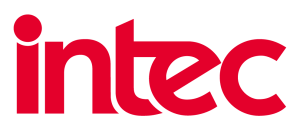
Financial Modeling and Valuation, with a focus on advanced financial concepts and valuation techniques, is the subject of INTEC’s specialized Financial Modeling and Valuation course.
The program is designed for individuals who are professionals and want to understand the intricacies of financial forecasting and local market analysis.
Using case studies and practical applications, this course gives participants real-world experience in creating dynamic financial models and valuation frameworks for the Dominican market. It is one of the best financial modeling institutes in the Dominican Republic.
| Course | Duration | Fees |
| Financial Modeling and Valuation | 5 months | DOP 72,124 |
| Financial Analysis and Forecasting | 4 months | DOP 48,082 |
Here’s a guide to the top Financial Modeling Courses in Auckland with Placement Assistance.
3. Universidad APEC (UNAPEC)
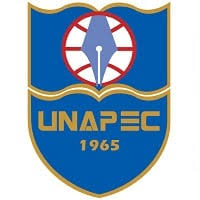
The Certificate in Financial Analysis and Modeling from UNAPEC allows students to gain a holistic understanding of financial modeling fundamentals using Excel-based techniques and is considered one of the well-known financial modeling institutes in the Dominican Republic that works on a hands-on basis.
It allows participants to practice on projects that mirror real financial situations. The course is for newcomers to finance as well as for seasoned professionals. And for those who want to build their financial analysis skill, it is ideal.
| Course | Duration | Fees |
| Diploma in Financial Modeling | 6 months | DOP 48,082 |
| Certificate in Business Financial Analysis | 4 months | DOP 30,051 |
Your search for the best Financial Modeling Courses in Dubai ends here. Do check them out.
4. Instituto Nacional de Formación Técnico Profesional (INFOTEP)
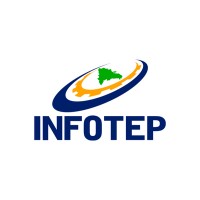
The entry to an intermediate-level course offered by INFOTEP, well-renowned financial modeling institutes in the Dominican Republic, is for professionals who are new to financial modeling.
INFOTEP’s course is oriented towards developing skills, the course is applied and is focused on modeling and financial analysis; these skills are applicable in different sectors in the Dominican Republic.
| Course | Duration | Fees |
| Financial Modeling and Analysis Basics | 3 months | Free (Government Sponsored) |
| Advanced Financial Modeling Techniques | 6 months | Free (Government Sponsored) |
Have a look at these industry-specific Financial Modeling Courses in London and master the in-demand skills, tools, and techniques.

5. Coursera

Dominican Republic students who are interested in financial modelling can study a Financial Modeling Specialization. It is offered by Coursera, one of the reputed financial modeling institutes in the Dominican Republic, in collaboration with top universities.
In their financial modeling training program in the Dominican Republic, you receive a structured path through a few modules with key areas.
These areas include corporate finance, financial statement modeling, and valuation, finishing with a certification that is recognized globally.
| Course | Duration | Fees |
| Business and Financial Modeling | Self-paced | DOP 3,546/month |
| Finance and Quantitative Modeling for Analysts | Self-paced | DOP 3,546/ month |
Eager to know about the extensive Financial Modeling Courses in Hong Kong with placement support? Here is a guide.
6. EdX
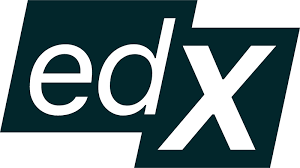
The Financial Modeling Professional Certificate from EdX is their Financial Modeling course in the Dominican Republic. It is a self-paced online program on financial analysis, financial forecasting and valuation techniques.
The program offered by one of the top financial modeling institutes in the Dominican Republic is perfect for beginners and seasoned professionals alike.
Learners get the chance to obtain a certificate from globally recognised institutions while advancing modeling skills applicable everywhere.
| Course | Duration | Fees |
| Financial Modeling and Analysis | 4 weeks | Free |
| Commercial Property Contracts and Financial Modeling | 4 weeks | Free |
| Introduction to Cash Flow: Modeling and Forecasting | 8 weeks | 8,976 |
Here is an extensive guide to the top-ranked Financial Modeling Courses in Australia. Read and explore in-depth.
7. CFA Institute
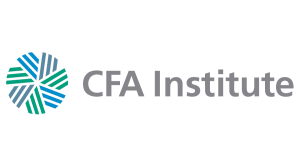
CFA Institute’s workshops on investment and valuation modeling are intensive, hands-on learning. Industry experts conduct these workshops for professionals to improve investment analysis skills such as discounted cash flow (DCF) and merger modeling.
Finance professionals will find the CFA Institute’s high standards make this program particularly valuable. It is one of the best financial modeling institutes in the Dominican Republic.
| Course | Duration | Fees |
| Financial Modeling Course | 10-20 Hours | Not Available |
Explore the top-ranked Financial Modeling Courses in Djibouti for your career enhancement!

8. Wall Street Prep

Popular with finance professionals, Wall Street Prep’s Financial Modeling Bootcamp is an in-depth training program. It presents practical, applicable modeling skills in Excel from financial statements to complex valuation techniques.
Wall Street Prep’s boot camp is well-known for its industry-based approach in which students quickly pick up practical and marketable skills. It is one of the well-known financial modeling institutes in the Dominican Republic.
| Course | Duration | Fees |
| Financial and Valuation Modeling Certification Program | 46 Hours | DOP 29,995 |
Explore these industry-specific Financial Modeling Courses in Cameroon and master the in-demand skills, tools, and techniques.
9. LinkedIn Learning
![]()
The Financial Modeling Foundations course offered by LinkedIn Learning is a beginner-friendly course that will get you started with the basics of financial modeling.
Their financial modeling courses in the Dominican Republic include practical projects for hands-on learning. This is a video-based course that’s great for those without experience in financial models looking to learn the foundational knowledge they need.
| Course | Duration | Fees |
| Financial Modeling and Forecasting Financial Statements | Self-Paced | DOP 1,743 |
Refer to the list of top Financial Modeling Courses in Thailand
10. Financial Modeling Institute (FMI)
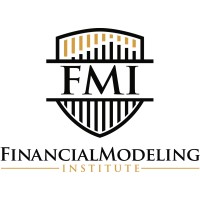
FMI’s certification is highly regarded around the world as being a structured pathway for those who are serious about excelling in financial modeling. FMI offers FMI multiple levels of certifying students’ modeling skills through practical exams.
If you want to show you are an expert in financial modeling on an international level, then the financial modeling courses in the Dominican Republic are for you.
| Course | Duration | Fees |
| Foundations in Financial Modeling | 15 hours | DOP 11,720 |
| Advanced Finance Modeler | 50-100 hours | DOP 41,772 |
| Chartered Finance Modeler | 75-120 hours | DOP 41,772 |
| Master Financial Modeler | Not Available | Not Available |

Frequently Asked Questions
1. Why should I take financial modeling courses in the Dominican Republic?
Financial modeling courses provide skills that come in handy in almost all finance-related areas, for example, in corporate finance, investment banking, and risk management, among many others. As the companies grow, so does the need for finance professionals who can use data to make decisions. This is especially true for places such as tourism, real estate, and manufacturing.
2. What should one have to register for a financial modeling training program in the Dominican Republic?
For a financial modeling course, some basic understanding of finance, accounting and Excel skills is necessary. For some advanced programs, the student may need to be familiar with financial statements and be able to engage in valuation methods. Many institutions have very beginner courses that can help you establish these skills before moving on to further advanced topics.
3. Can I take online financial modeling courses in the Dominican Republic?
There are many Financial modeling institutes in the Dominican Republic which offer online courses. These online courses are flexible, so a student can study on his or her own terms, which makes them optimal for professionals looking to gain some new skills without quitting their jobs.
4. What are some career opportunities after taking a financial modeling class?
Upon completing the courses, graduates will find careers in areas such as financial analysts, investment banking analysts, corporate finance specialists, and portfolio managers. These roles apply to any industry where financial modeling is used as a tool in business planning, investment analysis, and risk assessment.
Conclusion
Financial Modeling skills are more important than ever in the Dominican Republic’s growing economic sector. The technical skills needed to analyze and predict financial data, as well as the strategic thinking needed to make decisions in an array of industries, are covered in financial modeling courses in the Dominican Republic.
Choosing a course that you will have an interest in pursuing as a career and a skill you already possess is very important. The discipline will put you in a position to play a key role in businesses and industries. With the right training, you’ll be able to be an advanced financial analysis professional.

Varun
Are financial bottlenecks holding your business back? Here's how I can help you: With rich experience in advanced financial modeling and transaction support......
